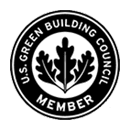The biggest construction job involves a huge reservoir intended to provide Floridians with clean drinking water for the foreseeable future, as well as playing a key role in larger scale work aimed at restoring the Everglades, while a luxury housing development in Vero Beach is putting sustainability at the heart of high-end living. On a smaller but no less important scale, a timber pavilion at the University of Florida points the way toward sustainable construction for the future, with locally sourced trees taking a starring role.
Sticking with the Everglades for another story, we look at how growing rice in flooded fields helps to prevent soil erosion as well as producing a bumper crop of rice, while another perennial H2O Zone topic crops up again in the form of the Florida coral reef. August marks the start of the coral reef research season, and the results from Palm Beach are highly encouraging. Finally, we give a mention to two organizations being rewarded for the efforts they’ve made to promote and embrace the ethos of recycling and sustainability, efforts that help to convince us that Florida as a whole is moving in the right direction.













